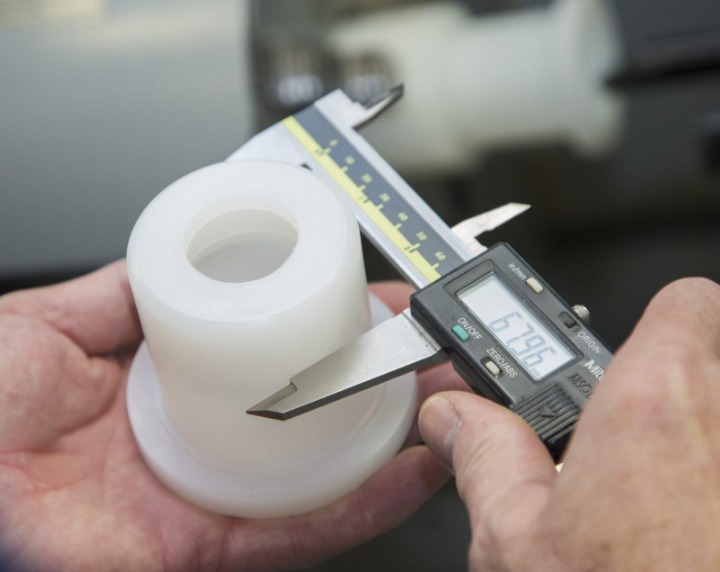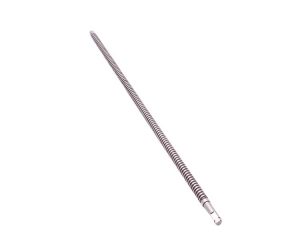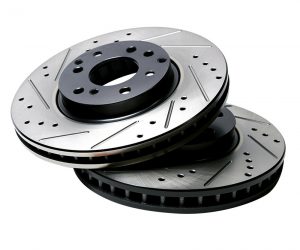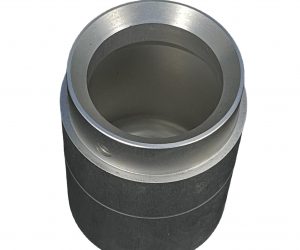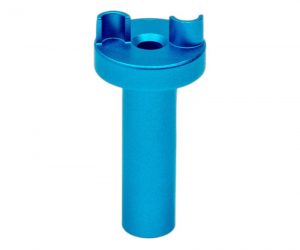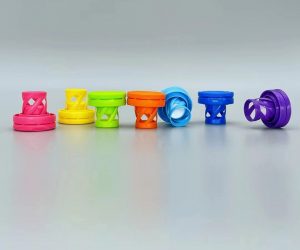Introduction
What is Water Assisted Injection Molding?
Water Assisted Injection Molding (WAIM) is an advanced manufacturing process that has gained significant attention in the plastics industry. It is a variation of the traditional injection molding process, with a unique twist - the use of water as an assisting medium.
In a nutshell, in water assisted injection molding, molten plastic is first injected into a mold cavity. After that, high - pressure water is introduced into the mold. The water, being incompressible, pushes the molten plastic to fill the mold cavity more evenly and efficiently. This process is similar in concept to Gas Assisted Injection Molding (GAIM), but with water replacing the gas. The key difference between the two lies in the properties of the assisting medium. Water has a higher density and heat capacity compared to gas (usually nitrogen in GAIM). For example, the density of water is about 1000 kg/m³ at standard conditions, while the density of nitrogen gas is around 1.25 kg/m³. This higher density of water allows for better pressure transmission during the molding process.
The heat capacity of water is also much higher. Water has a specific heat capacity of about 4.2 kJ/(kg·K), while nitrogen has a specific heat capacity of approximately 1.04 kJ/(kg·K) at room temperature. This means that water can absorb more heat from the molten plastic during the cooling process, leading to faster cooling times in water assisted injection molding. Faster cooling times can significantly increase the production rate. In some cases, cooling times can be reduced by up to 50% compared to traditional injection molding, according to industry studies.
The Mechanics of Water Assisted Injection Molding
The Process Step - by - Step
- Polymer Melt Filling: The process begins with the injection of molten polymer into the mold cavity, just like in traditional injection molding. The polymer is heated to its melting point in the injection unit of the molding machine and then forced into the mold through a runner system. For example, in the production of a plastic pipe, high - density polyethylene (HDPE) is melted and injected into a cylindrical mold cavity. The injection pressure and speed are carefully controlled at this stage. Generally, injection pressures can range from 50 - 200 MPa depending on the type of plastic and the complexity of the mold.
- Water Injection: Once the mold cavity is partially filled with the molten polymer (usually around 80 - 90% full in the case of short - shot water assisted injection molding), high - pressure water is introduced into the mold through a special water injection nozzle. The water, being incompressible, acts as a driving force to push the remaining molten plastic to fill the entire mold cavity. The water injection pressure is typically in the range of 10 - 50 MPa. This pressure has to be carefully calibrated to ensure that the plastic is evenly distributed and that no defects such as blow - through (where the water breaks through the plastic wall) occur.
- Pressure holding and cooling: During the holding and cooling phase, the high - pressure water remains in the mold, maintaining pressure on the plastic to prevent shrinkage and ensure proper dimensional stability. At the same time, the water also acts as a cooling medium. Due to its high heat capacity, water can absorb a large amount of heat from the molten plastic, significantly reducing the cooling time. As the plastic cools and solidifies around the water channel, it takes on the shape of the mold cavity. For instance, in the manufacturing of a complex - shaped automotive interior component, the cooling time can be reduced by 30 - 50% compared to traditional injection molding.
- Demolding: After the plastic has cooled and solidified sufficiently, the water is drained from the mold, and the molded part is ejected. The water - filled channels inside the part can either be left as hollow spaces, which can be beneficial for reducing weight and material usage, or they can be filled with a secondary material later if required.
A simple flowchart can illustrate this process:
| Step | Description |
| 1. Polymer Melt Filling | Melt polymer is injected into the mold cavity |
| 2. Water Injection | High - pressure water is introduced into the partially filled mold |
| 3. Holding and Cooling | Water maintains pressure and cools the plastic |
| 4. Demolding | Water is drained, and the part is ejected |
Key Components and Their Roles
- Injection Molding Machine: The injection molding machine is the core of the water assisted injection molding system. It is responsible for melting the polymer resin, injecting the molten plastic into the mold, and providing the necessary clamping force to keep the mold closed during the molding process. Modern injection molding machines are equipped with advanced control systems that can precisely control parameters such as injection speed, pressure, and temperature. For example, a large - scale injection molding machine used for industrial applications can have a clamping force of several thousand tons to handle large and complex molds.
- Mold: The mold is designed to shape the molten plastic into the desired product. In water assisted injection molding, the mold has additional features to accommodate the water injection and drainage. It includes water channels, water injection nozzles, and venting systems. The mold's material is usually made of high - strength steel to withstand the high pressures during the molding process. For example, in the production of a large - scale plastic automotive part, the mold may be made of P20 steel, which has good machinability and hardness.
- Water Injection System: This system consists of a water pump, pressure regulator, water lines, and water injection nozzles. The water pump is responsible for generating the high - pressure water required for injection. The pressure regulator ensures that the water is injected at a consistent and controlled pressure. The water injection nozzles are designed to introduce the water into the mold cavity in a precise manner. For example, a high - pressure water pump used in water assisted injection molding can generate pressures up to 50 MPa, and the nozzles are carefully designed to have a specific orifice size to control the flow rate of water.
Case Studies
Successful Implementations
- Automotive Industry: A well - known automotive manufacturer used water assisted injection molding to produce engine cooling pipes. By implementing this technology, they achieved a 30% reduction in material usage compared to traditional solid - walled pipe manufacturing methods. The water - cooled channels inside the pipes not only reduced the weight of the components but also improved the cooling efficiency. For example, the heat transfer coefficient of the water - assisted injection - molded cooling pipes was increased by 20% according to in - house testing, which led to better engine temperature management. The production cycle was also shortened by about 40% due to the faster cooling effect of water, increasing the overall production capacity.
- Consumer Goods: A consumer goods company utilized water assisted injection molding for manufacturing large - sized plastic handles for lawn mowers. The traditional injection - molded handles often suffered from warping issues. After switching to water assisted injection molding, the warping problem was almost completely eliminated. The surface finish of the handles was also significantly improved, with a surface roughness reduction of about 50% as measured by a profilometer. This made the handles more aesthetically pleasing and comfortable to grip, enhancing the overall product quality and customer satisfaction.
- Industrial Equipment: In the production of large - scale industrial equipment components such as storage tank brackets, a company adopted water assisted injection molding. The new manufacturing process allowed them to create hollow - structured brackets. As a result, the weight of the brackets was reduced by 45%, which was beneficial for the transportation and installation of the industrial equipment. Additionally, the production cost was decreased by 35% because of the reduced material consumption and shorter production cycle.
Lessons Learned
- Process Parameter Optimization: From these case studies, it is clear that precise process parameter optimization is crucial. For example, in the automotive engine cooling pipe production, if the water injection pressure was too high, it could cause the plastic to burst, while too low a pressure would result in incomplete filling of the mold. Each material and product geometry requires careful adjustment of parameters such as melt injection volume, water injection pressure, and cooling time. A systematic approach, like using design - of - experiments (DOE) methods, can be very helpful in finding the optimal parameter settings.
- Mold Design Considerations: The mold design plays a vital role. In the production of lawn mower handles, the initial mold design had some flaws in the water channel layout, which led to uneven wall thickness in the early production runs. It is essential to ensure that the mold has proper water channels, injection nozzles, and venting systems to prevent issues like water leakage, uneven filling, and trapped air. Collaboration between mold designers, process engineers, and material experts is necessary to create an effective mold design.
- Quality Control: Implementing strict quality control measures is necessary. The industrial equipment manufacturer found that some of the early - produced storage tank brackets had internal voids or inconsistent wall thickness. Regular inspection of the molded parts using non - destructive testing methods such as X - ray inspection and dimensional measurement using coordinate measuring machines (CMMs) can help in detecting and rectifying quality issues promptly.
Yigu Technology's Perspective
As a non - standard plastic metal products custom Supplier, Yigu Technology highly values Water Assisted Injection Molding. Our rich experience in custom manufacturing positions us well to utilize this technology effectively.
One of our key advantages is our in - depth understanding of material - water interaction. We have mastered how different plastics respond to water injection during the molding process. This knowledge allows us to optimize the process for various non - standard products, ensuring high - quality results. For example, when manufacturing custom - designed plastic brackets with complex hollow structures, we can precisely control the water injection parameters to achieve the desired wall thickness and structural integrity.
Our advanced mold - making capabilities also play a crucial role. We can design and fabricate molds that are specifically tailored for water assisted injection molding. These molds are engineered to handle the high - pressure water injection and ensure proper water channel layout, reducing the risk of defects.
For our customers, the adoption of water assisted injection molding means several benefits. Firstly, they can expect cost - effective solutions. The reduced material usage and shorter production cycles translate into lower production costs. Secondly, the high - quality products with excellent dimensional stability and surface finish meet the most demanding requirements. Whether it's for the automotive, industrial, or consumer goods sectors, we can leverage this technology to provide custom - made products that stand out in the market.
